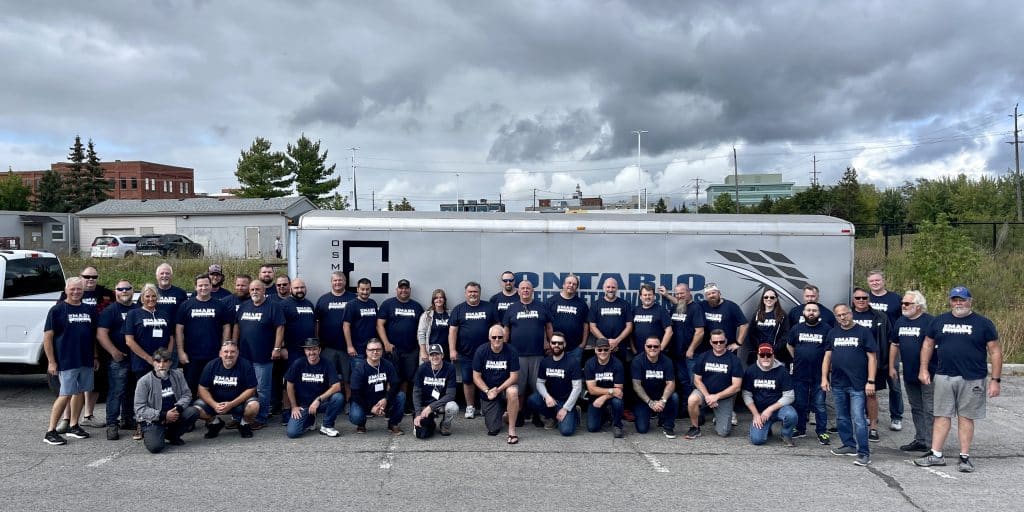
The Government of Canada has aspirational goals to achieve a net-zero society by 2050. To help reach those goals and move our national ambitions forward, the construction industry must lean into “Building It Green.” Buildings and construction have been identified as among the three primary sources of greenhouse gas emissions.
In 2021, Canada’s Building Trades Unions (CBTU) launched a national project to integrate climate literacy into the skilled construction trades’ education and training. The new Building It Green program is Canada’s most comprehensive climate-focused construction curriculum. Funded by Employment and Social Development Canada’s Union Training and Innovation Program (UTIP), Building It Green is a national training program to strengthen the construction industry’s ability to support journeypersons, apprentices and training instructors as they manage the emerging and pressing needs of climate change. Transitioning Canada’s workforce to net-zero and ensuring our members receive the skills required to lead the change — without losing jobs — is critical to our economy.
The project’s advisory committee includes affiliate members of the CBTU and national training directors from coast to coast. I would like to recognize and thank Training Coordinator and President of SMART Local 280 (Vancouver, B.C.) Jud Martell. Brother Martell is a member of the Sheet Metal Industry Training Board and provided his expertise and valuable input on the curriculum development for our trade-specific training.
On February 6, 2024, the program was officially launched at the IBEW Local 586 Training Centre in Ottawa, with Minister of Employment, Workplace Development, and Official Languages Randy Boissonnault present. A public webinar on Building It Green climate literacy training — by tradespeople, for tradespeople — was held on February 15. There were also workshops at the CBTU Legislative Conference in April for those who attended.
Ontario organizing blitz
Local 235 is in the southwestern portion of Ontario, servicing the Sarnia, Windsor and Chatham areas. The region is experiencing unprecedented work in all sectors, driven largely by the NextStar battery plant and the Gordie Howe Bridge projects.
The local is currently performing an organizing drive to sign up members for NextStar contractors that are providing building services installations, architectural panels, clean rooms and roof installation, along with numerous members working on the seven-plus buildings at the Gordie Howe Bridge site.
Over the span of five days, four organizers and two International representatives canvassed the Local 235 region. They spent one day canvassing the Sarnia area, three days in the Windsor and Tecumseh areas and the final day in Chatham, handing out pamphlets with QR codes that link to a SMART landing page. Simultaneously, a coordinated blitz was launched on Facebook and Instagram, advertising and promoting the same landing page and upcoming work opportunities.
The landing page analytics revealed a total of 52 submitted interest forms. Local 473 (London, Ontario) Organizer Patrick Gordon scheduled numerous in-person meetings, some leading to organizing campaigns with nonunion companies. Additionally, they compiled a list of close to 70 potential new members with various levels of experience.

Excellent job by Patrick Gordon setting up pinned locations of nonunion sites in the area so time was not wasted finding sites and workers. Outstanding job by the organizers involved: Tim Last of Local 537 (Hamilton, Ontario), Bowen LaFave of Local 30 (Toronto), Carm Corsaro of Local 285 (Toronto), Patrick Gordon and International Representatives Craig Taylor and Scott McQueen.
Recognition of dedication
On February 29, 2024, International Representative for Atlantic Canada Leonard Day retired. Brother Day joined Local 437 (Saint John, New Brunswick) in 1984 and became a journeyperson in 1986. He served in various roles in his local union, including trustee, vice president and business manager/financial secretary-treasurer from 2002–2014. He held numerous positions at the national level as president of the Eastern Conference, president of the Canadian Council of Sheet Metal Workers and Roofers, and on the Board of Trustees for the Local Union & Council Pension Plan.
In 2014, he was appointed by former General President Joseph Nigro as International representative and sat as a board member on both the General Presidents’ Maintenance Committee for Canada and the National Maintenance Council for Canada.
On behalf of all the members, thank you for your years of dedication and service, and may you enjoy a long and healthy retirement with your wife, Della, your family and especially the grandkids!
I remain, fraternally yours,

Chris Paswisty
Director of Canadian Affairs




